What is trigger point therapy, and Why Does it Matter?
A trigger point is defined as an irritated area of muscle that is painful when compressed, stretched or contracted. Trigger point therapy is the use of static compression either by a therapist or modality such as a lacrosse ball, massage gun, barbell or foam roller. By applying trigger point therapy to a trigger point, the muscle can improve range, functionality and decrease compensatory mechanisms and fatigability. Just as you should include both strength and aerobic fitness in your weekly training, exercises such as trigger point therapy and stretching should be used weekly to first help decrease pain, then to prevent pain and then to improve performance.
How to use Trigger Point Therapy for Neck Pain
There are many reasons why you might be getting neck pain. Pain commonly happens because of prolonged sitting, often in a slumped or forward head position. Neck pain can also happen when we are stressed. We tend to hold ourselves more tightly and breathe more shallowly which recruits our accessory neck muscles. This can then lead to trigger points and neck pain.
The following exercises are great options, but may not be right for you. It is always best to consult a health practitioner to see what exercises are best for you.
The 3 exercises below target muscles that tend to get trigger points and can lead to neck pain and headaches. For all exercises, ideally hold for 90seconds and repeat 1-2x/day when the neck is feeling tight or 1x/day preventatively.
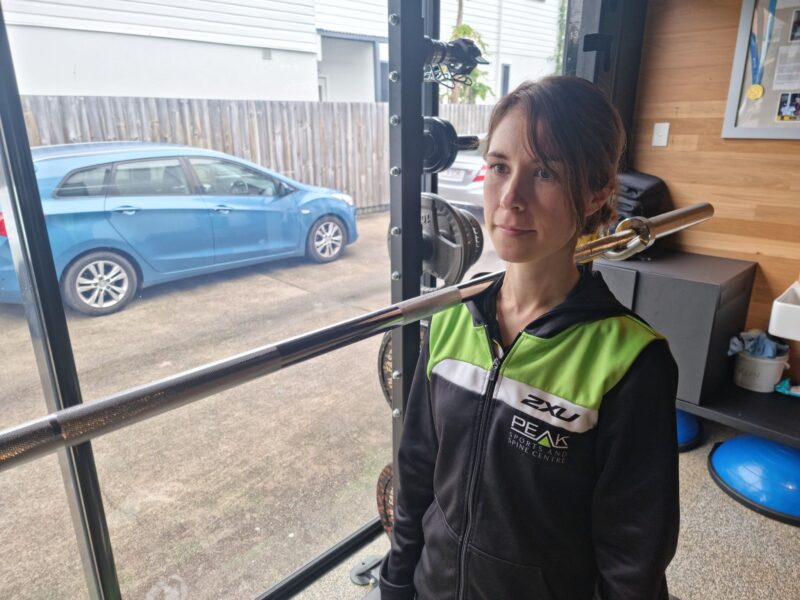
Upper trap Release with barbell
Set a barbell up just below shoulder height. Move underneath the bar and stand up so that the bar applies pressure to the middle of the muscle belly on the top of your shoulder: approximately the ⅓ closest to your neck. This is your upper trapezius. Hold 90 seconds. Repeat on the other side.
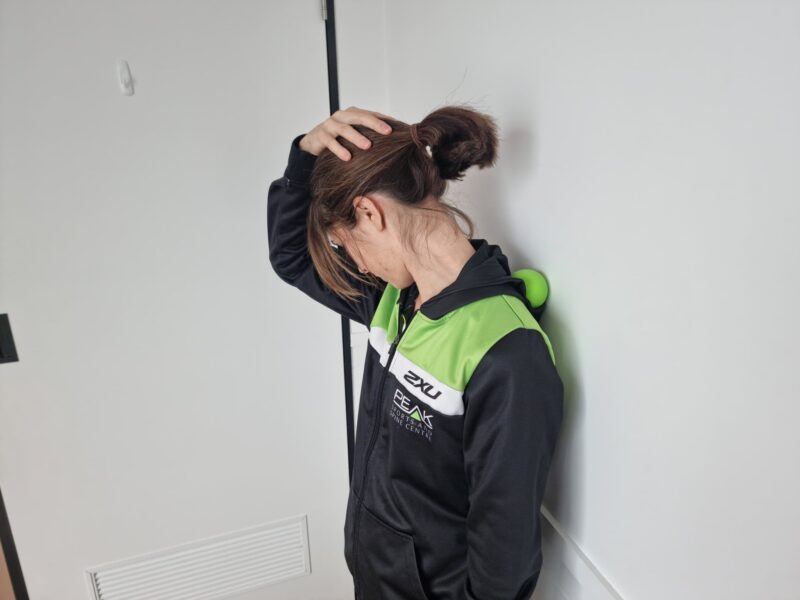
Levator Scap release with trigger ball
Take your trigger ball and line up on the wall at the upper, middle corner of your shoulder blade. This will hit the insertion of the levator scapulae muscle. Then turn your head to the side opposite of the ball and look down towards your armpit. Hold 90 seconds. Repeat on the other side.
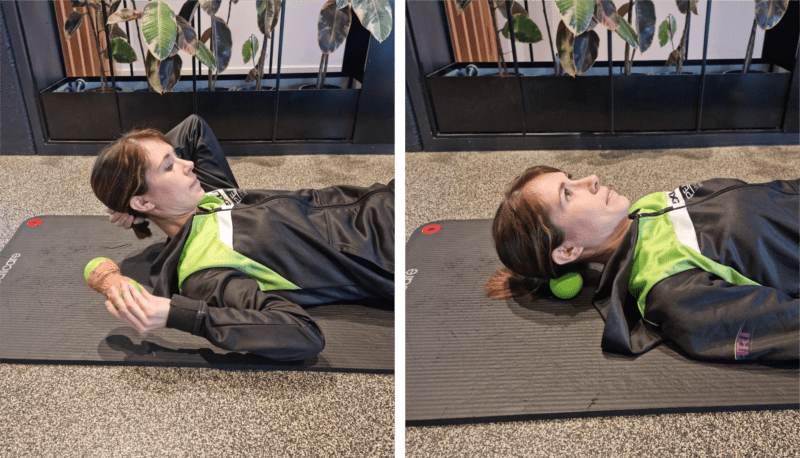
Suboccipital release with tennis balls in sock
Take 2 tennis balls and tie them in a sock. Alternatively you can tape the 2 tennis balls together. Lie down on the floor and line the tennis balls up at the very base of your skull. Slightly tuck your chin in, as if making a double chin. Hold here 90seconds. If this is too much pressure you can also do the same movement up against the wall.
Trigger point therapy can be a great tool in improving muscle range, functionality and decreasing compensatory mechanisms. Where you need to perform trigger point therapy differs from person to person. Trigger point therapy, like most therapies, is best backed up with a consistent, graded exercise routine to build up the body’s robustness. Discussions with a trained professional, such as one of our coaches at PEAK can also address other components of why you might be feeling pain including thoughts, expectations and previous experiences.
Kirsten Seth
Coach and Physiotherapist
PEAK Sports And Spine Centre
Let's get started — How can we help?
Physiotherapy
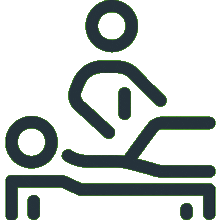
Chiropractic
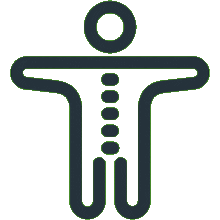
Podiatry
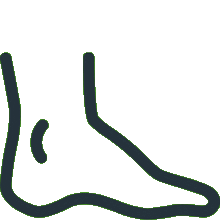
Massage Therapy
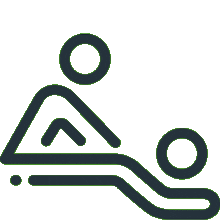
Women's Health Physiotherapy
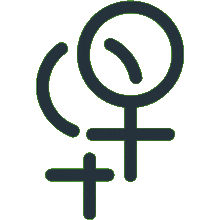
Running Program Tailored To Your Goals
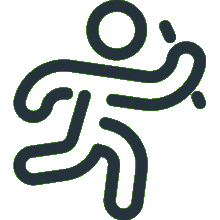
Joint Mobilisation
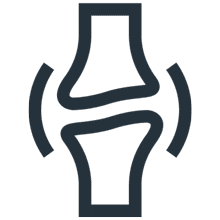
Active Release Technique
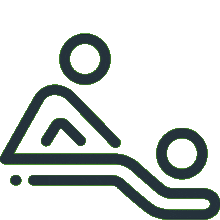
Exercise Prescription
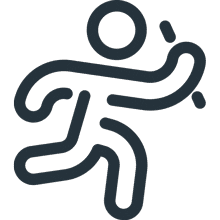
Real Time Ultrasound Imaging
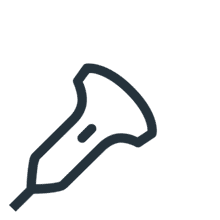
Spinal Manipulation
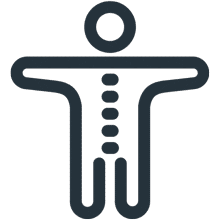
Functional Movement Screen
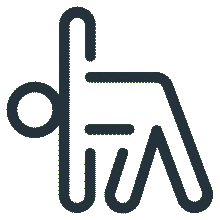
Knee Pain Treatment

Hamstring Strain Treatment
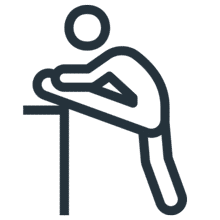
Hip Pain Treatment

Upper, Middle & Lower Back Pain

Neck Pain Treatment

Shoulder Pain & Rotator Cuff Tear

Can't find what you're after?
View all ServicesOr email the PEAK team at info@peakssc.com.au
Hawthorne
- Phone: (07) 3399 3318
- Fax: (07) 3319 6577
Address
5/171 Riding Road,Hawthorne, QLD, 4171 Get Directions
Opening Hours -
6 days per week
- Monday - Friday: 7:00 am - 8:00 pm
- Saturday: 7:00 am - 1:00 pm
To make a booking outside of business hours, please use our form by clicking here.
New Farm
- Phone: (07) 3399 4668
- Fax: (07) 3319 6577
Address
1/15 Lamington Street,New Farm, QLD, 4005 Get Directions
Opening Hours -
6 days per week
- Monday: 7:00 am - 8:00 pm
- Tuesday: 7:00 am - 8:00 pm
- Wednesday: 9:00 am - 8:00 pm
- Thursday: 10:00 am - 8:00 pm
- Friday: 7:00 am - 3:00 pm
- Saturday: 7:00 am - 3:00 pm
To make a booking outside of business hours, please use our form by clicking here.
